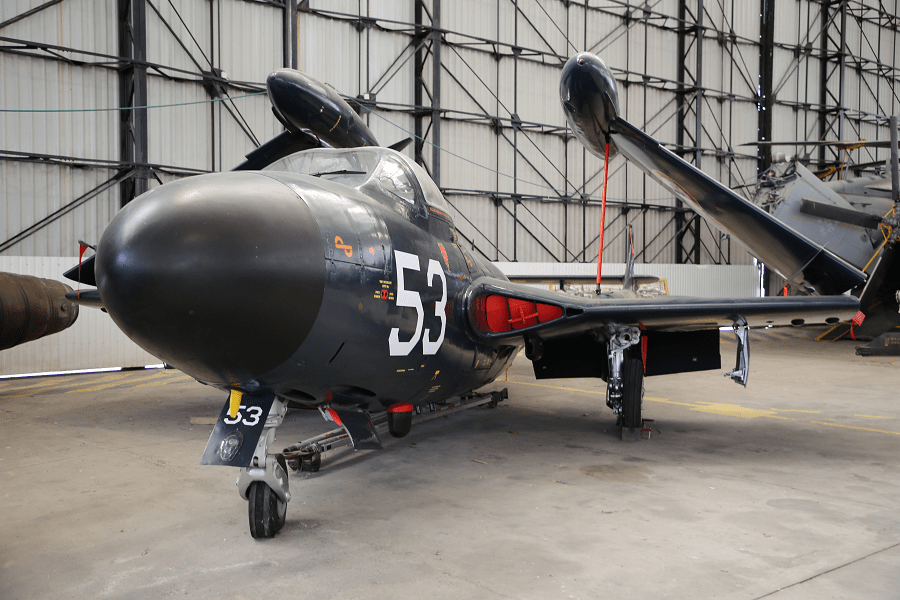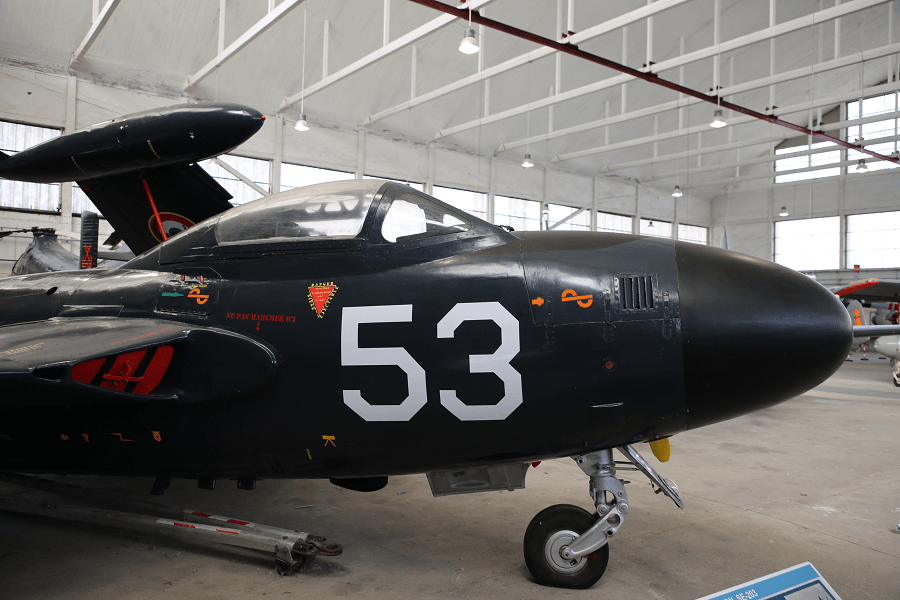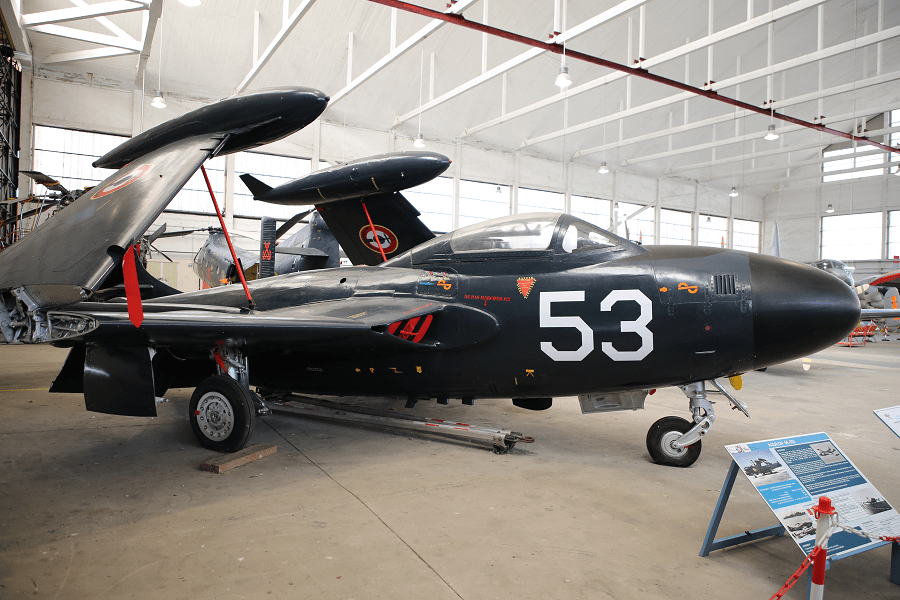The de Havilland Sea Venom is a British postwar carrier-capable jet aircraft developed from the de Havilland Venom. It served with the Royal Navy Fleet Air Arm and with the Royal Australian Navy. The French Navy operated the Aquilon, developed from the Sea Venom FAW.20, built under licence by SNCASE (Sud-Est).
SNCASE (Sud-Est) license-built 101 Sea Venom FAW.20 as the Aquilon for the French Navy.
- Aquilon 20 – 4 examples assembled from the parts provided by de Havilland plus 25 locally built.
- Aquilon 201 – Three prototypes built in France.
- Aquilon 202 – Two-seat version with ejection seats, an American AN/APQ-65 radar and air-conditioning. 25 built.
- Aquilon 203 – Single-seat version with an American AN/APQ-94 radar and equipped with racks for air-to-air missiles. Prototype converted from Aquilon 202 plus 40 built.
- Aquilon 204 – Two-seat training version without guns. 6 Converted from Aquilon 20.
Aquilon SE 203
Brand: Iom-Kit
SNCASE (Sud-east) S.E. 203 Aquilon
Max. speed: 945 km/h (mach – o.8)
Armament: four cannons Hispano (20 mm)
Crew: one pilot
Engine: De Havilland Ghost 103
SNCASE was a French aircraft manufacturer. The company was formed on February 1, 1937, by the nationalization and merger of Lioré et Olivier, Potez, CAMS, Romano and SPCA.
Following the resolution of the 1936 general strike of French heavy industry, the government of Léon Blum introduced an act to nationalize the French war industry. The act provided for the creation of seven nationalized aeronautical manufacturing companies: six for aircraft (SNCASE, SNCASO, SNCAN, SNCAO, SNCAM, SNCAC), and one for aircraft engines (SNCM – Lorraine-Dietrich).
SNCASE incorporated the facilities of Potez in Berre-l’Étang, CAMS in Vitrolles, Romano in Cannes, SPCA in Marseille and Lioré et Olivier at Argenteuil and Marignane. SNCASE became the largest of the aeronautical Sociétés nationales, with 225000 m2 of space in six factories and 2550 employees. (1700 of the workforce came from Lioré et Olivier, along with 90% of then-current manufacturing contracts.)
In 1941, during the Second World War, the Paris design bureaus of both the nationalized and the private aircraft firms were relocated to avoid capture. SNCASE acquired the failing SNCAM and moved its engineering operations to SNCAM’s headquarters at the former Dewoitine factory in Toulouse.
During the rationalisation of the nationalised Aircraft Industry during the 1950s, SNCASE merged with SNCASO to form Sud Aviation on March 1, 1957, which in turn was later amalgamated into Aérospatiale and eventually the EADS group.














